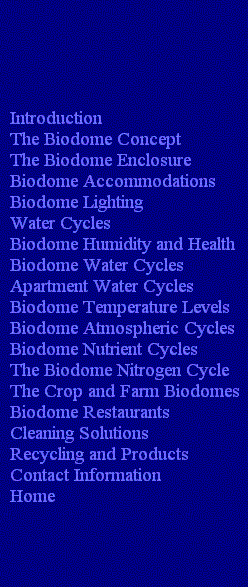
The Crop and Farm Biodomes
Finally, in the crop and farm biodomes of these biodome complexes, all crops would be fertilized by nutrients that would be obtained from the composting toilets of the complexes and would be irrigated by a nutrient-rich water supply that would also be continually obtained from these composting toilets as part of a closed-loop nutrient cycle, where nutrients would be returned to the toilets by way of food that would originate from the crop and farm domes, which would then be digested and returned to the composting toilets.
Now, regarding the Methane gas and manure that would be produced inside these crop and farm biodomes by cows, it should be recognized that Methane is lighter than air, so, as a result of this condition, it will always rise to the uppermost regions of these biodomes, where it can then be periodically ignited by a spark, which would then split the Methane into water vapor and Carbon Dioxide—leaving no other elements behind. After this split takes place, then, these elements will both fall to the lowest regions of these biodomes and feed the crops there.
Regarding the manure in these biodomes, then, put simply, it would always be gathered and incorporated into the nutrients that fertilized the crops. And regarding what would be done about the vapor that would be produced by the chickens in these biodomes due to their urine excretions, the living quarters of the chickens would be completely sealed from the atmosphere of these biodomes along the perimeters of the biodomes, and the vapor that they would produce would then be condensed there by dehumidifiers and incorporated into the fertilizer that would be used for the crops of the biodomes. In addition, any crop within these biodomes that could be produced much more readily in a hydroponic system of fertilization, such as feed for cows and vegetables for people, would be produced in that way along the perimeters of these crop and farm biodomes.